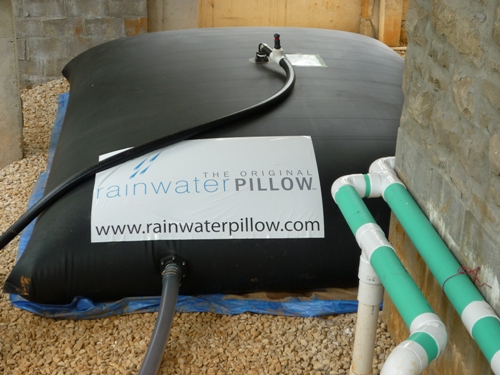We noted recently a report that homes in the drought-stricken states of the west have shifted the focus of design from energy efficiency to water efficiency. This trend provides an interesting view into a future where water becomes more valuable and scarce than carbon-based fuels.
There are multiple avenues to explore reducing water consumption in the modern log home. Some involve selecting and designing features, while others involve developing new habits.
Bathrooms, laundries and kitchens are among the top consumers of water in the home. In the kitchen, select appliances and fixtures that bear the Environmental Protection Agency (EPA) Watersense label or Energy Star label. If a new home is fully specified with Watersense construction, an average family of four can save about 50,000 gallons of water a year according to the EPA website. As rates for municipal water service increase that can save a lot of money.
For a Watersense home label, products that have been tested by the EPA and provide significant water savings should be installed,  including toilets, bath faucets, and showerheads. Also, a maximum water service pressure into the home of 60 psi can lower water consumption before the tap is even turned on. Selecting an on-demand hot water unit that stores no more than a half-gallon of hot water also keeps water use down. Energy Star clothes washers and dishwashers also meet Watersense requirements.
including toilets, bath faucets, and showerheads. Also, a maximum water service pressure into the home of 60 psi can lower water consumption before the tap is even turned on. Selecting an on-demand hot water unit that stores no more than a half-gallon of hot water also keeps water use down. Energy Star clothes washers and dishwashers also meet Watersense requirements.
Some fixtures that are in common use in Europe and in Western states include low-flow showers and faucets. Dual flush toilets that use less water for liquid than for solid waste flushing can also add to savings, and have been better engineered in recent years for power.
In addition, homes serviced by private wells and septic systems benefit from water conservation. Less water drawn from the local aquifer allows quicker recovery in a drought situation. And less water running through a septic system can extend the life of the leach field.
Habits ingrained in water use can also be changed to improve water conservation. Scraping rather than rinsing dishes before loading into the dishwasher, or turning water off when shaving or brushing teeth may seem like small amounts, but over time they can add up.

Even if your geographical area has sufficient rain, it’s a good idea to set up rainwater collection, identify natural pond sites, and include gray water recycling for landscaping. Many options are available for rainwater collection. You may want to check with your local government as some towns and cities limit the amount of rain that can be diverted from the aquifer.
One nifty option for rainwater storage is the Rainwater Pillow, an above-ground system for collecting and storing rainwater for a number of applications. The heavy-duty PVC polymer bladder is made from materials used by the military and fire departments. Tucked away under a deck, porch or crawlspace, the pillow can alleviate consumption for toilet flushing, watering lawns and gardens, and fire suppression, among others.
There are multiple ways to conserve water and use it wisely. How many or few of these techniques you employ will depend on the water situation in your location.
